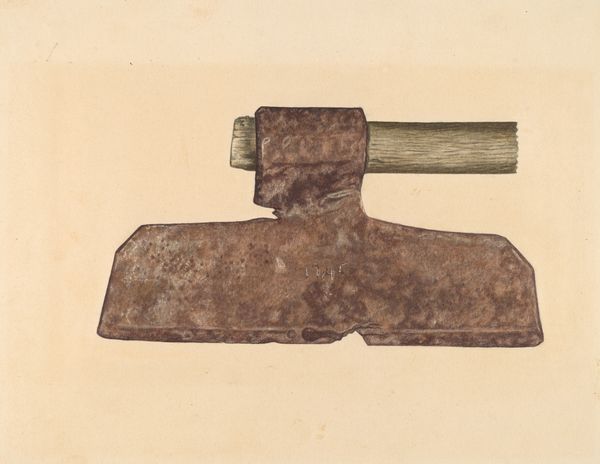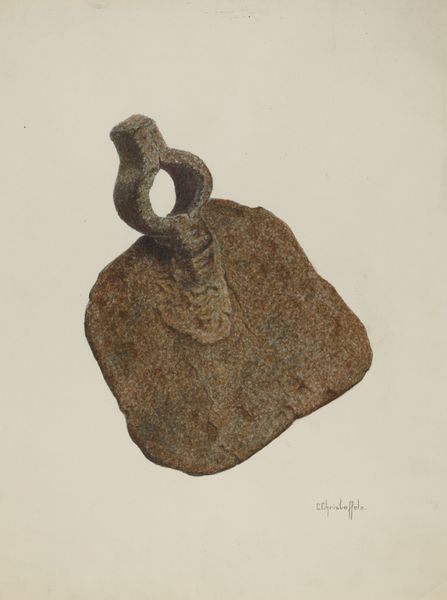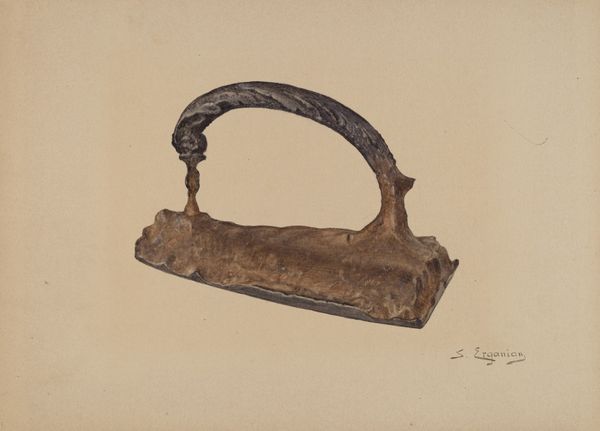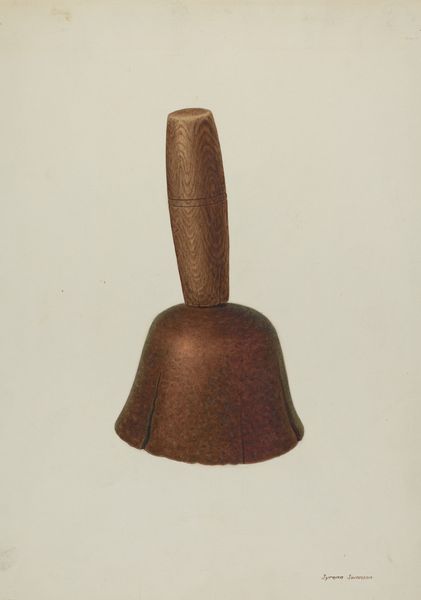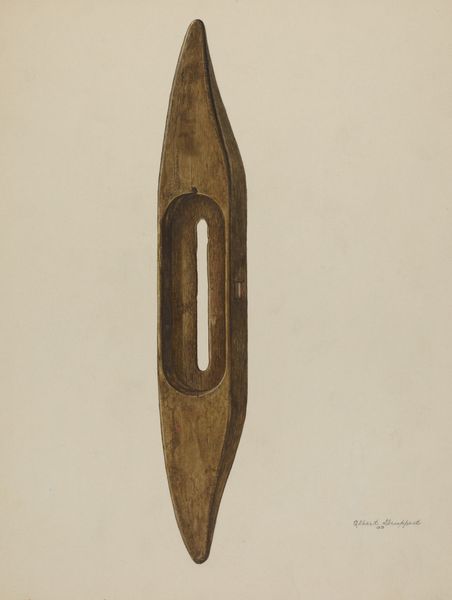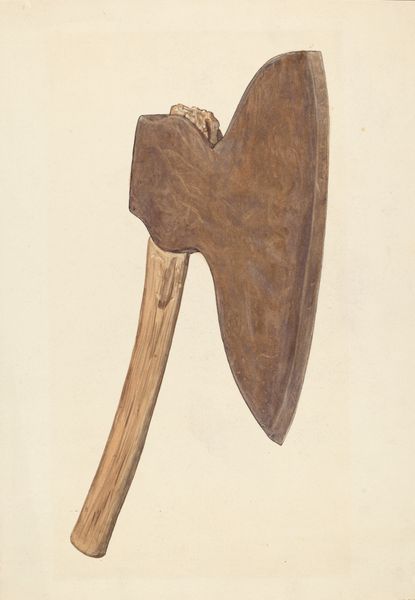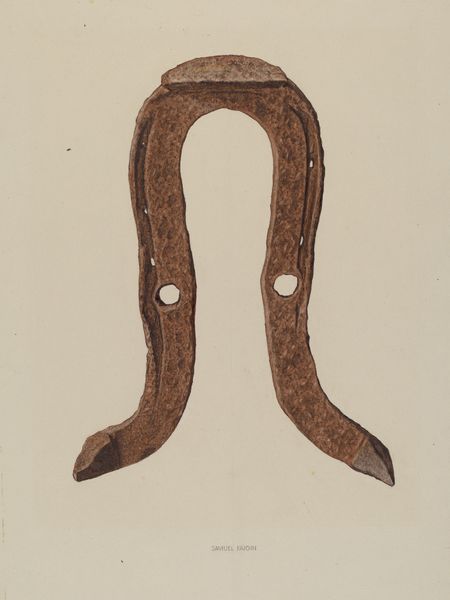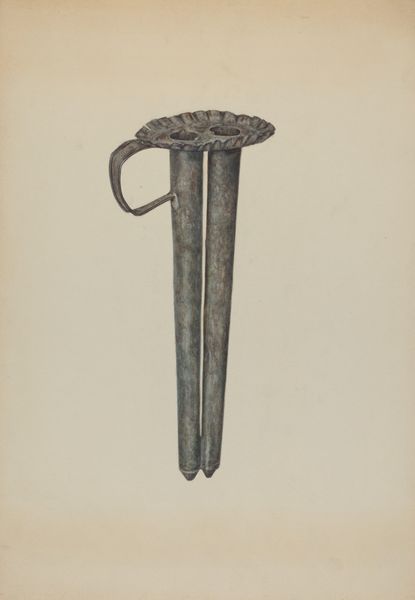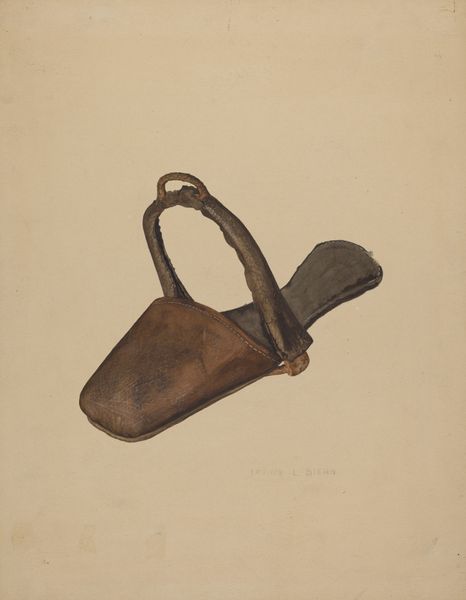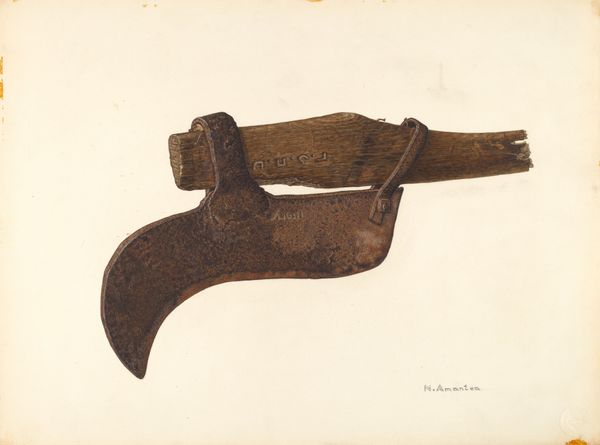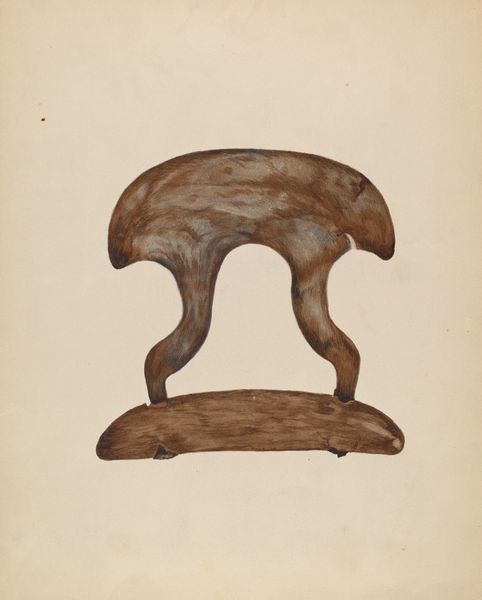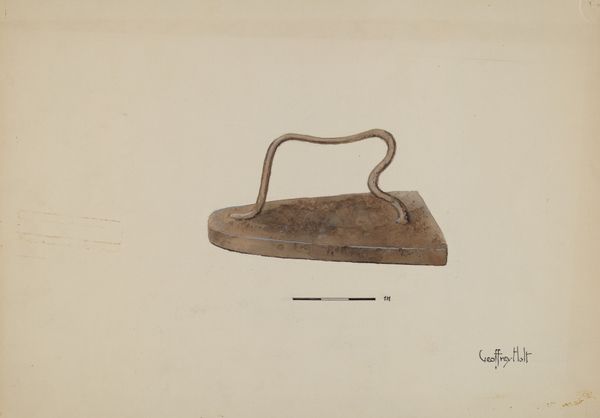
drawing, watercolor
#
drawing
#
charcoal drawing
#
watercolor
#
watercolor
Dimensions: overall: 22.9 x 30.5 cm (9 x 12 in.) Original IAD Object: 9" high; 12" wide at blade; 5" wide at blade 1 1/2" thick
Copyright: National Gallery of Art: CC0 1.0
Editor: So this is Herman Stroh's "Broad Axe Head" from 1938. It's a drawing and watercolor that depicts, well, a broad axe head. It feels quite stark and isolated; what strikes you most about this depiction? Curator: The axe, divorced from its handle and its context of use, becomes something more than just a tool. It’s an icon. The broad axe has long symbolized labor, pioneering, and the shaping of the American landscape. By focusing on the tool itself, Stroh invites us to consider these broader cultural associations, wouldn’t you agree? Editor: I hadn't thought about it that way. It just looked like an old axe to me. Now I'm wondering if it is about more than just literal representation. Curator: Indeed. What sort of cultural memories do you think are connected with the symbolism of an axe? Do images of Paul Bunyan or axes embedded in logs come to mind? Editor: I suppose. And now that you mention it, there's a sense of solidity and resilience, perhaps speaking to a bygone era of hard work. Do you think that feeling may have resonated with audiences during the late 1930s? Curator: Precisely! Consider the context of the Great Depression. An image of a strong, reliable tool might have evoked a sense of hope and the potential for rebuilding. The symbolism here is powerful. The artist takes what might have been regarded as a basic instrument and suggests greater, shared values. Editor: I'm starting to see how an image like this can be about so much more than just its surface appearance. It shows the axe’s relationship to American cultural values. Thanks for pointing that out. Curator: My pleasure! It is images and memories, and memories through images that tie us together.
Comments
No comments
Be the first to comment and join the conversation on the ultimate creative platform.
